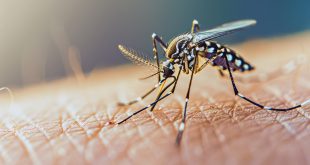Anterior Cruciate Ligament, commonly known as ACL, is one of the prime knee stabilizing ligaments that controls forward movement of the leg (tibia). It controls anterior knee translation during walking, running, and other sports activities. This ligament holds special importance in young individuals, policemen, army personnel, and sportsmen because of their high activity level. Healthy and intact ACL provides better stability to their knees and subsequently improves their performance.
But, what happens when the ACL is torn? Does it make any difference in their activity level? Does it harm knee joint if the problem is not addressed on time? What needs to be done following ACL injury? These questions may arise to anyone when they get injury to their knees.
ACL injury is suspected if one develops pain, swelling, and instability of knee following accident or sports injury. But, to confirm ACL injury, an MRI of the knee joint is needed. So, after any major or minor knee injury, visiting a doctor would be wiser than to wait and watch with normal home remedies. Doctor might ask you for an x-ray of the knee joint to rule out other bony injuries or fractures. Initially, the knee is put to rest with compression bandage and knee immobilizing brace. Ice compression along with medicines for pain and swelling are given as primary treatment. If the doctor suspects ACL injury, you might be asked for a MRI of the injured knee.
But, in case of old knee injuries, if the patient suspects “instability” while walking, running, or jumping, and the doctor finds forward movement of tibia in relation to the femur (Lachman’s test/ Anterior Drawer Test), then ACL injury is suspected.
After ACL injury, the knee becomes unstable, which predisposes it to further injury and development of osteoarthritis in the long run. Hence, proper treatment at the right time is crucial. Conservative management with knee brace, medicines, and physiotherapy is still advocated and practiced among patients with low activity level. But, the risk of developing osteoarthritis in the long run still retains with conservative management. Surgical management is more preferred in active and young individuals, where the goal is to anatomically reconstruct the ligament to restore anterior and rotational stability. It provides better stability, and hence improved performance, with comparatively less risk of condral/meniscal damage or osteoarthritis.
Reconstruction of ACL is done arthroscopically. It’s a kneehole surgery with minimal scars. The knee is visualized with the arthroscope; remnant torn ACL fibers are cleared out to visualize native bony land marks. Then, tendon is harvested from the same limb for graft preparation. Grafts can be taken from the hamstring (Semitendinous and Gracilis), quadriceps, patellar tendon, or peroneus longus tendon. The prepared graft is uploaded inside the knee, maintaining the exact anatomy of its femoral and tibial footprints. Loppendo buttons and biocomposite screws are used to fix the graft. Since this method is less invasive, it’s proven to result in less pain, less time of hospital stay, and quicker recovery than open surgery.
Regarding the timing of surgery, earlier the better, as studies show that in young athletes, those who have early surgical reconstruction are more likely to return to their previous level of athletic ability when compared to those who underwent delayed surgery or non-operative treatment.
Rehabilitation part is important for a successful outcome. The goals of rehabilitation following an ACL injury are to regain knee strength and motion. Physiotherapy is started from the very next day of surgery, and it generally takes six weeks to gain full range of knee movement. The patient can walk normally without crutches after that. Sports-oriented exercises and training is needed for athletes to return back to professional sports, and it’s possible only after 9 to 12 months of surgery.
 Medicosnext
Medicosnext



